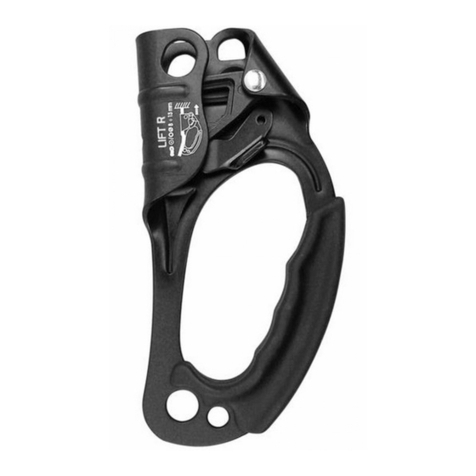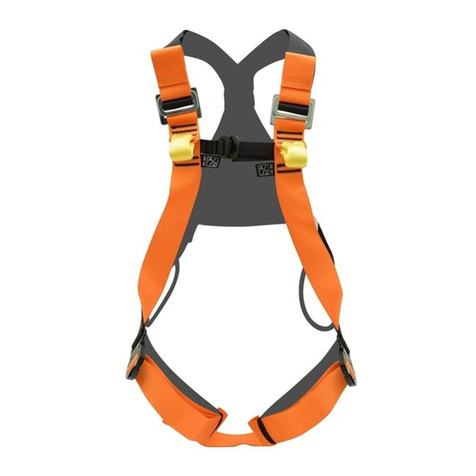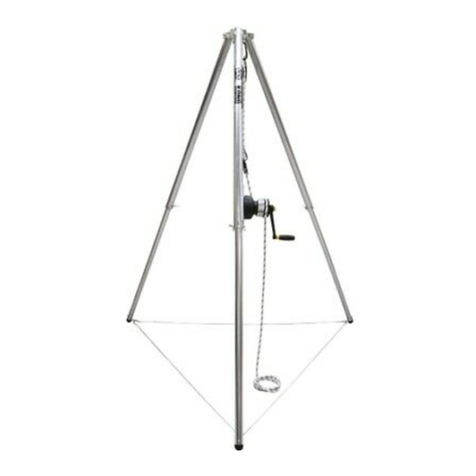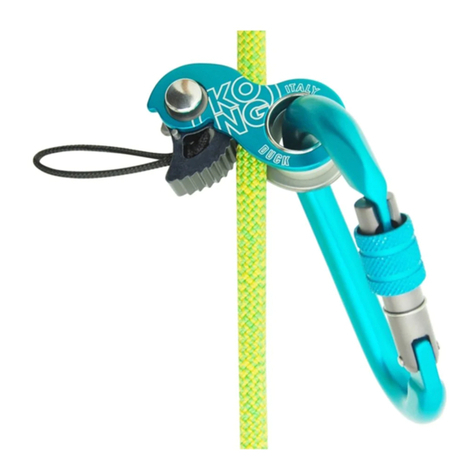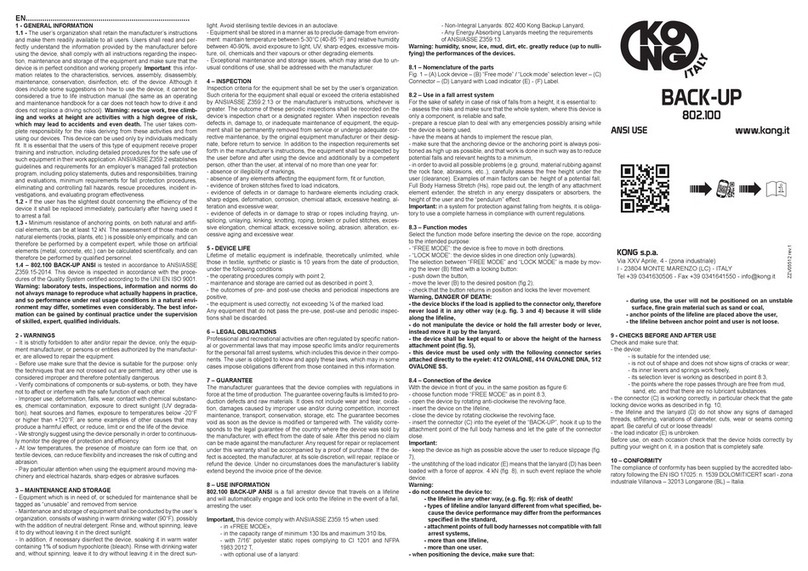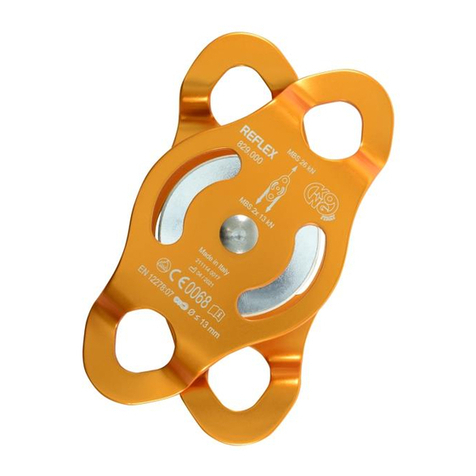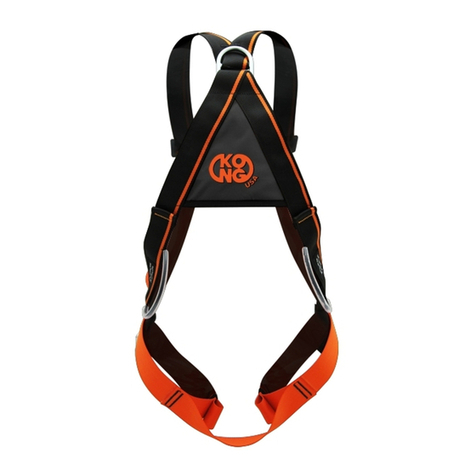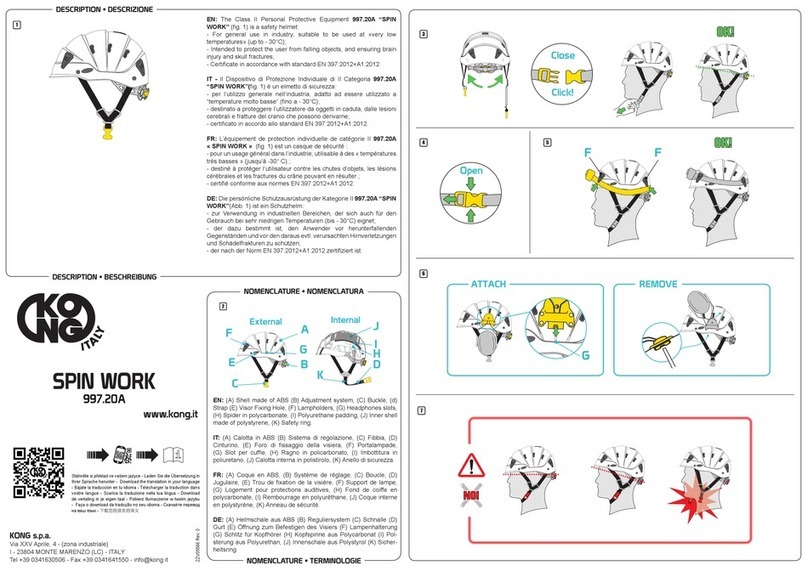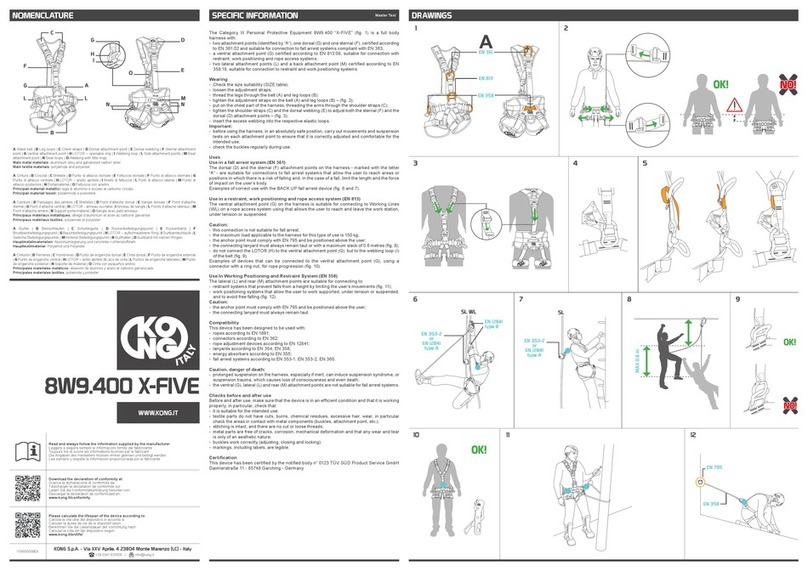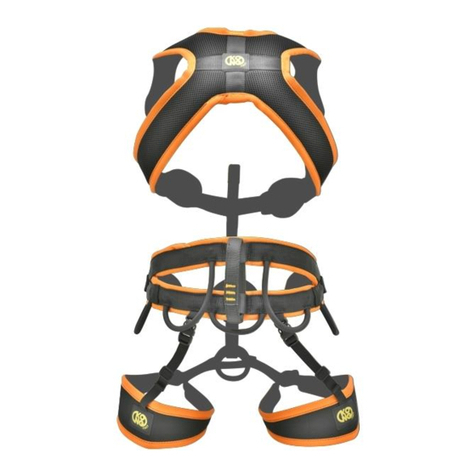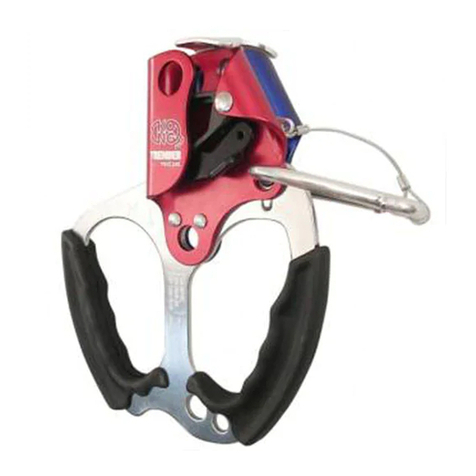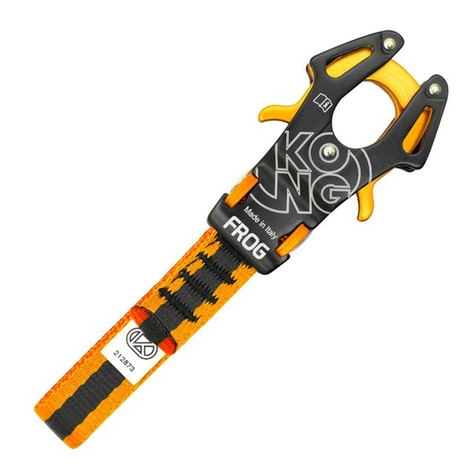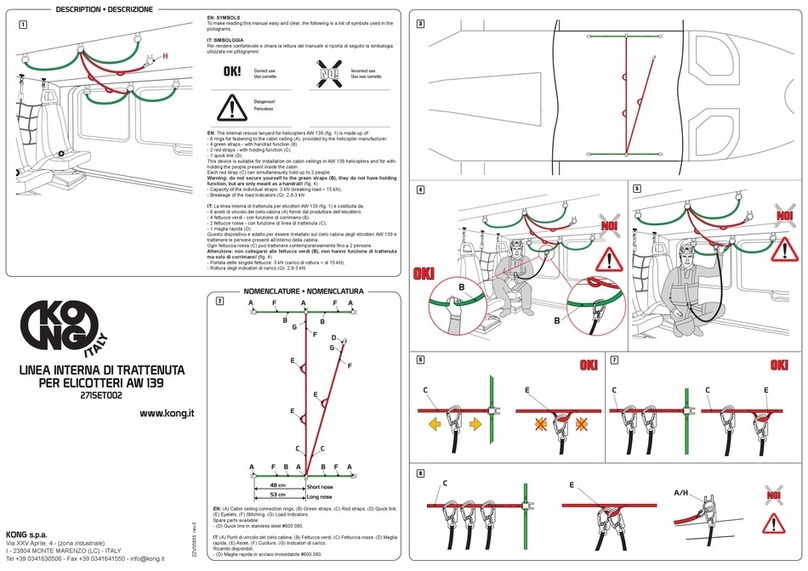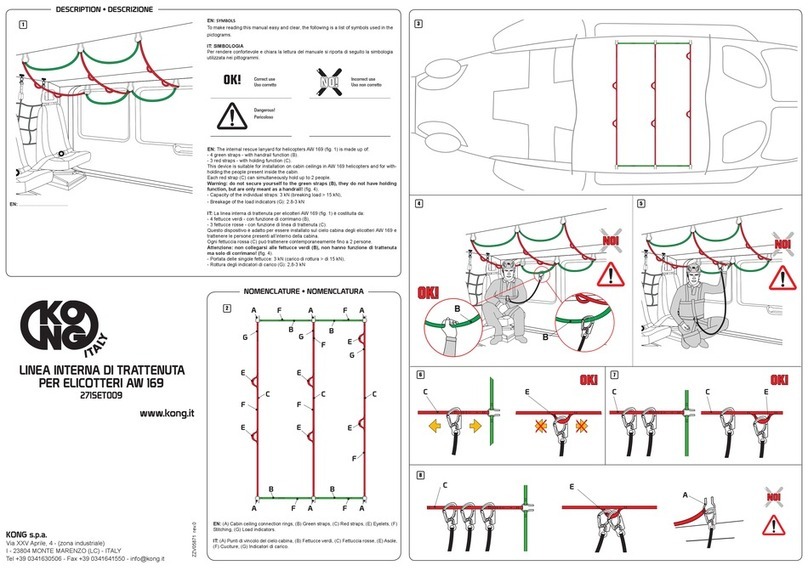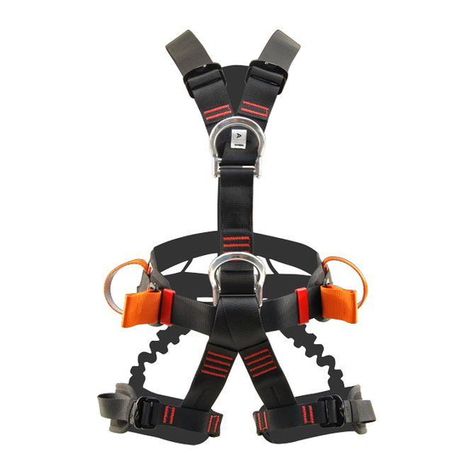
Instructions for use of the “K.A.R.S. - Kong Anti Rotation System”
Page 6of 40
The information relates to the description of the characteristics, services, assembly, disassembly,
cleaning, maintenance and conservation of the product, even if they contain some
recommendations for use, they must not be considered a user manual in operational situations.
For operational situations the user must be trained by experienced persons.
Remember that:
A) This product must be used only by trained and skilled persons, otherwise the user must be
constantly supervised by a trained and skilled person.
B) The user is personally responsible for knowing this product, learning how to use it and all the
safety precautions involved.
C) Carry out all the controls described in this manual before and after use and particularly make
sure that the product is:
- in perfect condition and works well,
- suited to the intended use.
D) The user is responsible for the proper use of this product. Any other usage is forbidden:
Attention, serious danger! Record the results of the controls on the “control card” attached to this
manual and keep it. If you have any doubts about the products safety and working conditions,
replace it immediately. Do not use the product that has undergone a shock (e.g. a fall), as any
internal damage or deformation not visible from outside could have considerably reduced its
strength. Incorrect use, mechanical deformation, device accidental drop from height, wear,
chemical contamination, exposure to heat as well as to weather conditions and unauthorized use
are some examples of other reasons that can reduce, limit and even terminate the service life of
the product.
Your life depends on the constant efficiency of your equipment and its history (use, storage,
controls, etc.).
E) When you intend to combine two (or more) products read carefully the instructions for use of
both products.
G) It is strictly forbidden to modify and/or repair the product: no liability will be recognized by
KONG S.p.A. for damage, injury or death caused by: improper use, changes made to product,
repairs by non-authorized persons or use of non-original parts.
1.4 –DISPOSAL
Once the device is unusable it must be disposed of. Comply with local regulations regarding
disposal. In particular, the batteries must be removed and disposed of separately. When in doubt,
return the product to be scrapped to KONG S.p.A.


